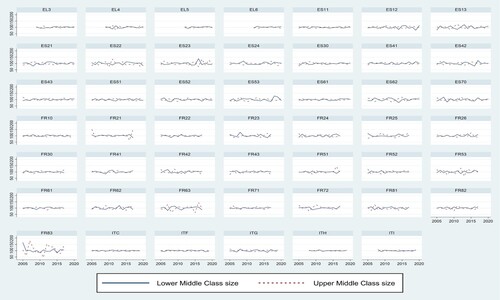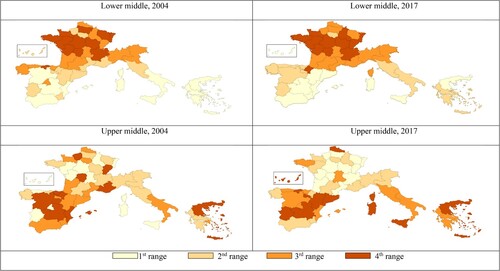Figures & data
Figure 1. Annual changes in lower- and upper- middle-class size. Source: EU-SILC (2004–17) and authors’ own elaboration.

Figure 2. Quartile map of lower- and upper-middle-income class size, 2004 and 2017.

Table 1. Moran’s index test for income classes by population, 2004–17.
Table 2. Conditional convergence model estimation (SDM): decomposition of gross domestic product (GDP) growth rate.
Table 3. Conditional convergence. Estimation of direct and indirect effects.
Supplemental Material
Download PDF (195.6 KB)DATA AVAILABILITY
This paper used European Union Statistics on Income and Living Conditions (EU-SILC) data, which are public and can be freely accessed by contacting EUROSTAT. However, the authors cannot provide it due to the privacy clause signed in the contract with EUROSTAT.
